Undetectable AI writing tools can be your secret weapon for beating AI detectors. Moreover, they should be a significant part of almost every student's workflow. From Turnitin to GPTZero, educators are scanning papers for undetectable AI content. In this article, I’ll show what the best undetectable AI writer is. You'll also know what undetectable AI content means from a technical perspective. I'll offer you my personal rating of the most commonly used undetectable AI humanizers for students. This 5-star rate includes JustDone AI Humanizer, QuillBot, Undetectable.AI, Smodin, and Humanize AI Tool.
What is Undetectable AI Content
Undetectable AI writing tools work on two levels. First, they break up the predictable patterns in AI-generated text. Sentence length, structure, vocabulary – they all get shifted. Second, they add human-like inconsistencies – a phrase here that’s colloquial, a rhythm change there. That’s authenticity, not randomness.
Kickoff labs I’ve run with students have shown that even small shifts in sentence rhythm can shift scores from “likely AI” to “likely human.” There was a session where I tested Gemini-generated content through several detectors. It scored high for AI. We then processed it through JustDone AI Humanizer and modified only small phrases. And the score shifted to human.
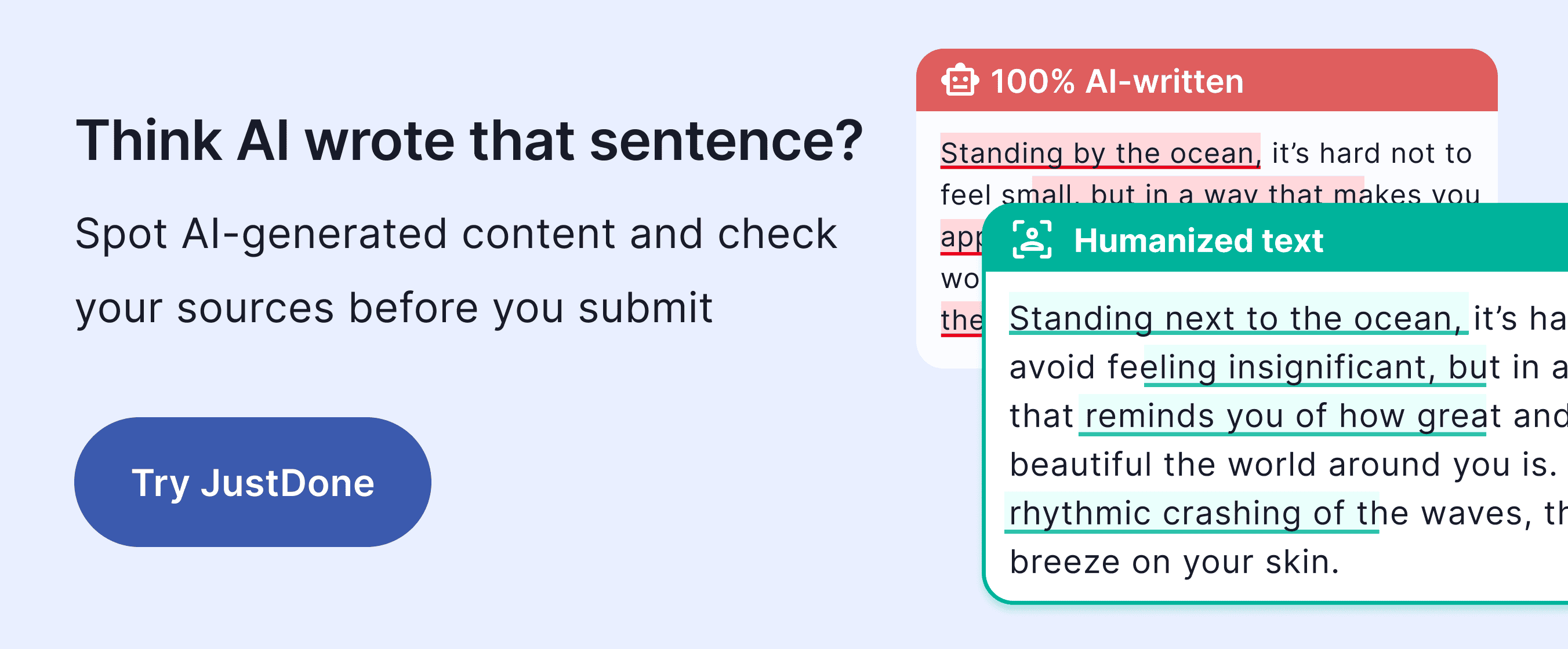
5 Best Undetectable AI Humanizer Tools
I’ve tested 5 top tools that most learners use in the USA and worldwide. I ranked them in accordance with their performance, usability, and how good they transform flagged content into a human-like one. The result is in the chart below.
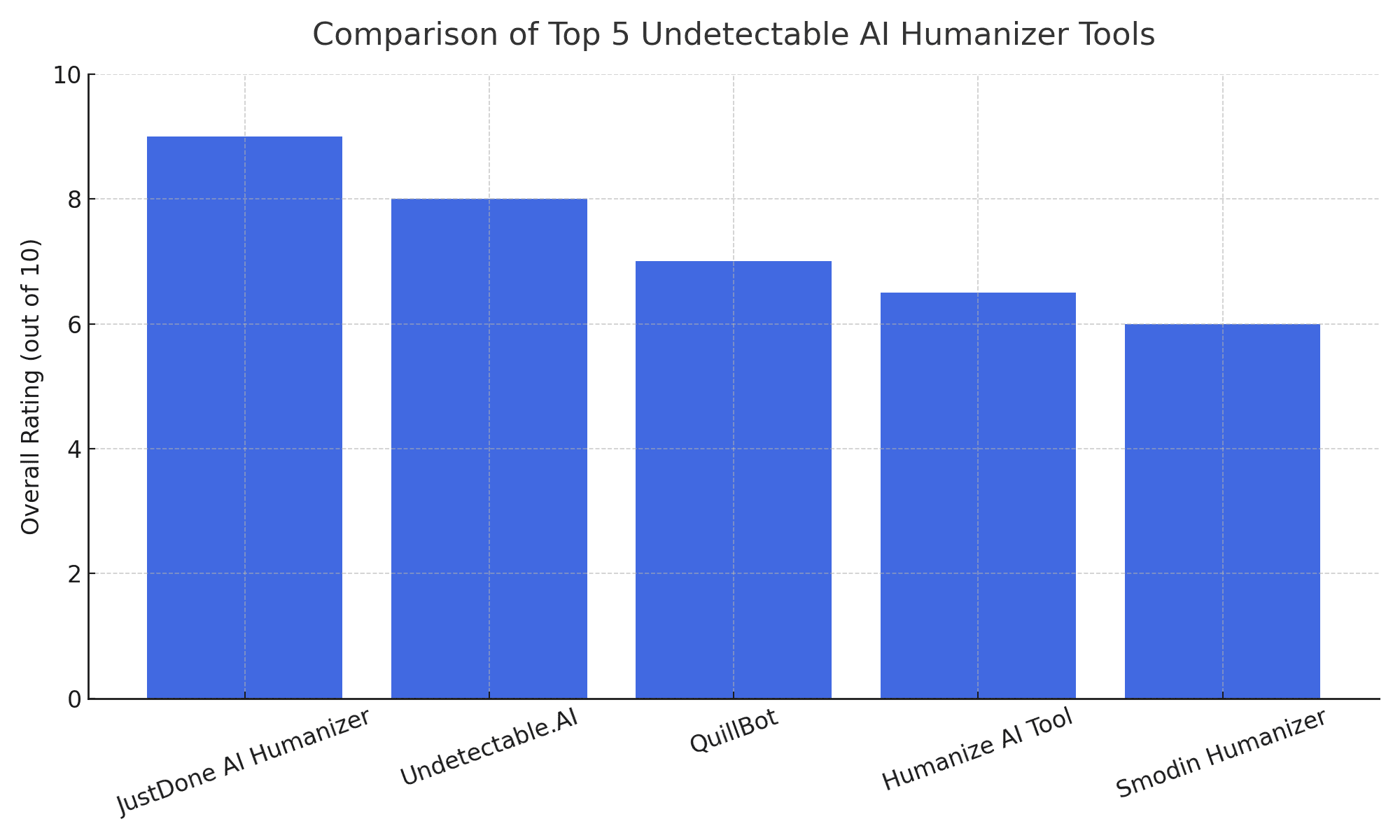
JustDone AI Humanizer – 9/10
After testing everything on the market, JustDone’s undetectable AI humanizer has become my top recommendation for students. I’ve watched dozens of learners use it not just to rewrite text but to actually improve it.
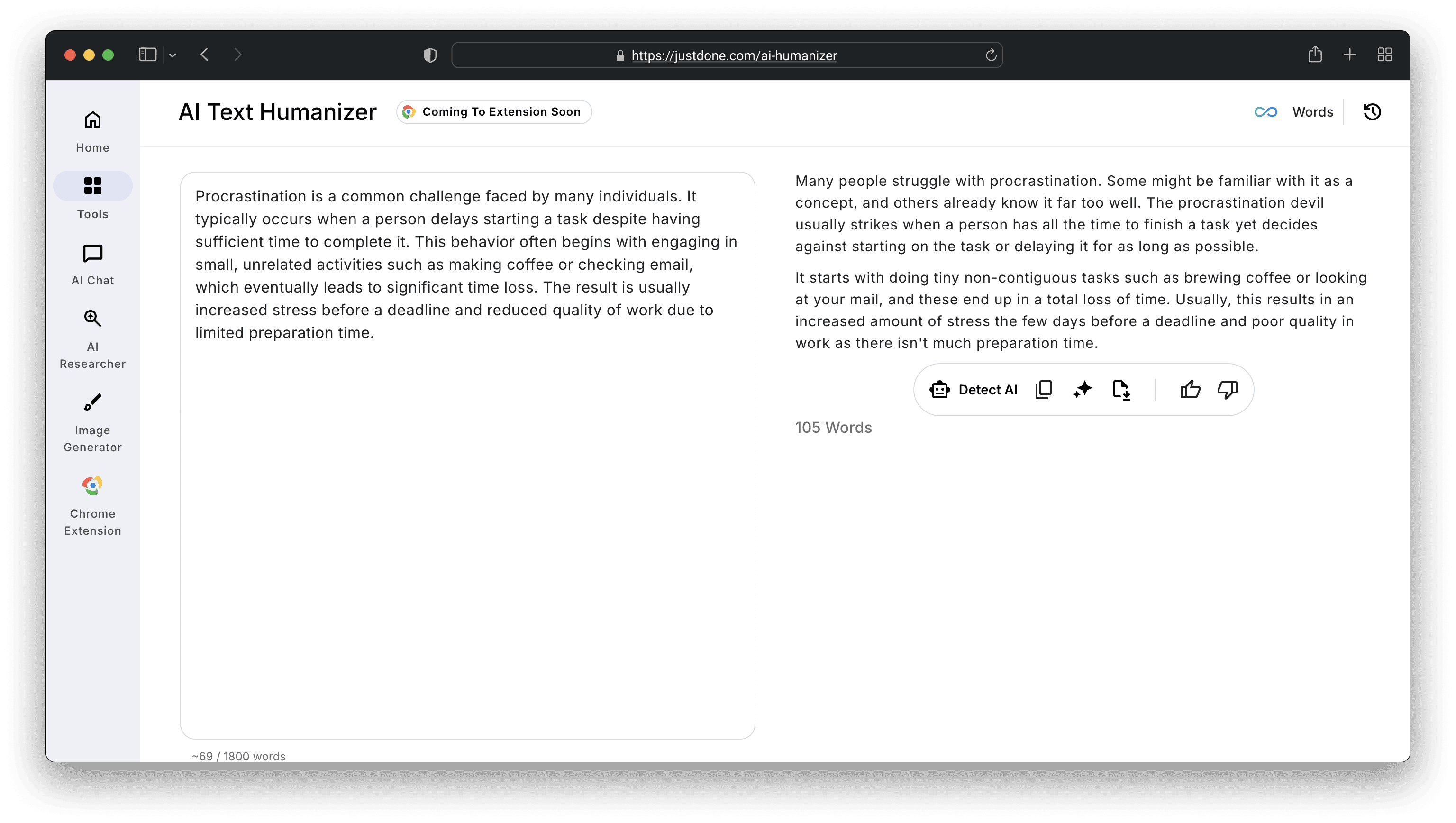
The tool works by adjusting sentence structure, swapping in more natural transitions, and breaking up the “too perfect” rhythm that detectors pick up on. But the real reason I recommend JustDone is because it helps students keep their tone.
One student I worked with wrote a research paper draft and used JustDone’s humanizer to revise it. When we tested the output in Turnitin’s AI detection, it passed with no flags. But more importantly, when we read the essay out loud, it still sounded like him. That’s the difference between an undetectable AI writer that helps you and one that masks you.
JustDone also integrates an AI detector for students to run a quick check before submitting. This helps reduce anxiety because students can see how their paper might look from the teacher’s perspective. I like this feature because it encourages learning, not hiding.
If I had to list a downside, it’s that students still need to do some manual edits to make the text truly personal. But in my experience, that’s a feature, not a bug.
Undetectable.AI – 8/10
Undetectable.AI markets itself directly as a tool to “bypass AI detectors,” and for the most part, it does exactly that. I’ve run essays through Undetectable.AI and watched the AI detection scores drop significantly. For students who need quick results, this tool is often the first one they try.
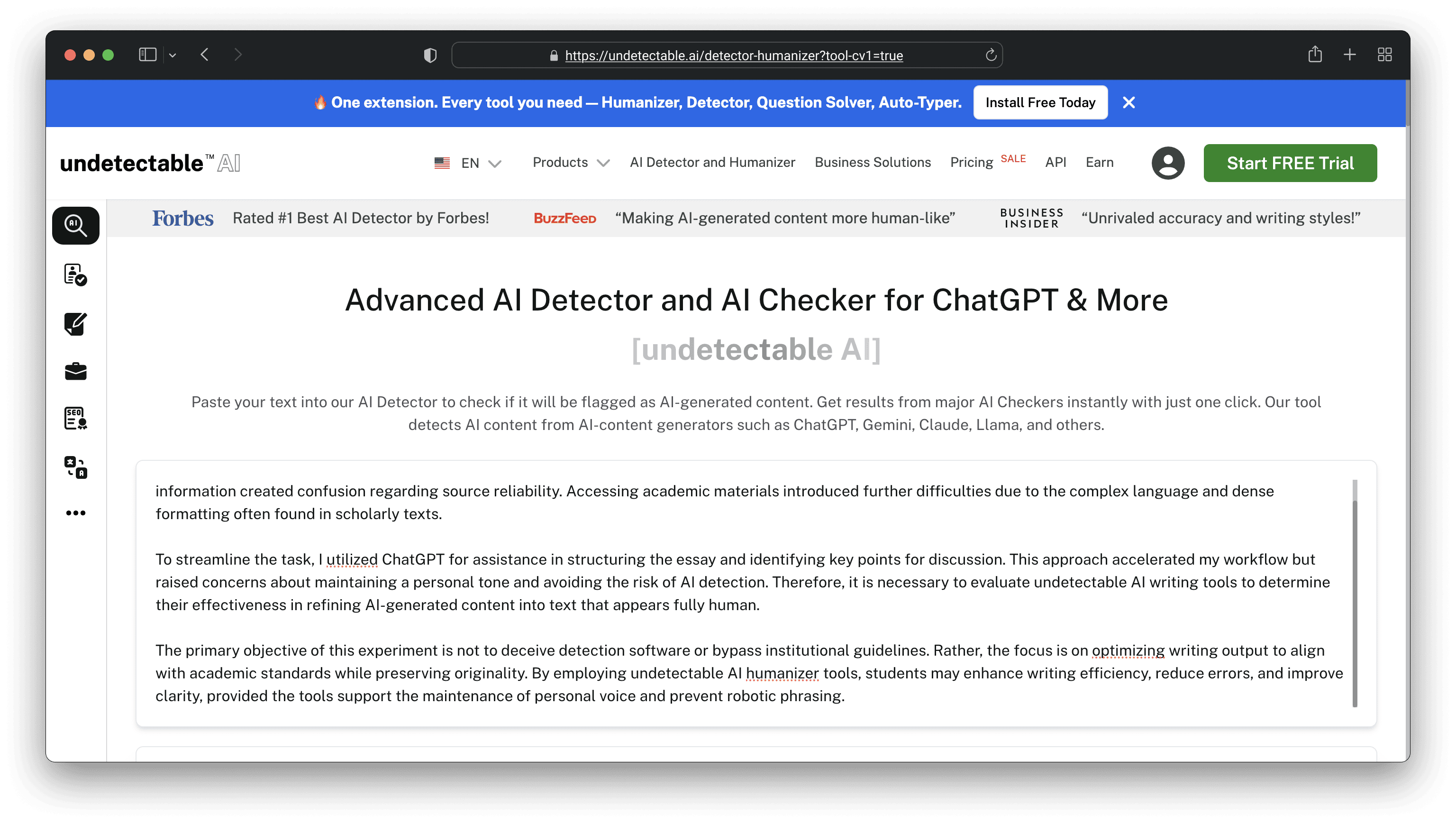
In terms of technical power, it’s strong. The tool changes sentence construction and adds variability in ways that confuse pattern-based AI detectors. However, there’s a catch: sometimes the output sounds a bit too neutral, like the personality was washed out. I’ve had students tell me their writing felt “safe but soulless” after running it through Undetectable.AI. It removes the AI fingerprint, but it can also remove the human touch.
For bypassing AI detection tools such as Turnitin, Undetectable.AI is highly effective. But if your professor knows your writing style, they might still notice something feels off. That’s why I recommend this tool for low-stakes writing or short-form content, but not for personal essays or statements of purpose.
QuillBot – 7/10
QuillBot is one of the most widely used AI paraphrasers in the student community. Almost every learner I meet has tried it. Many use it because it’s easy, familiar, and often free (at least in limited versions). QuillBot has become a go-to for students looking for an undetectable AI writing tool, especially for paraphrasing textbook material or rewording ideas.
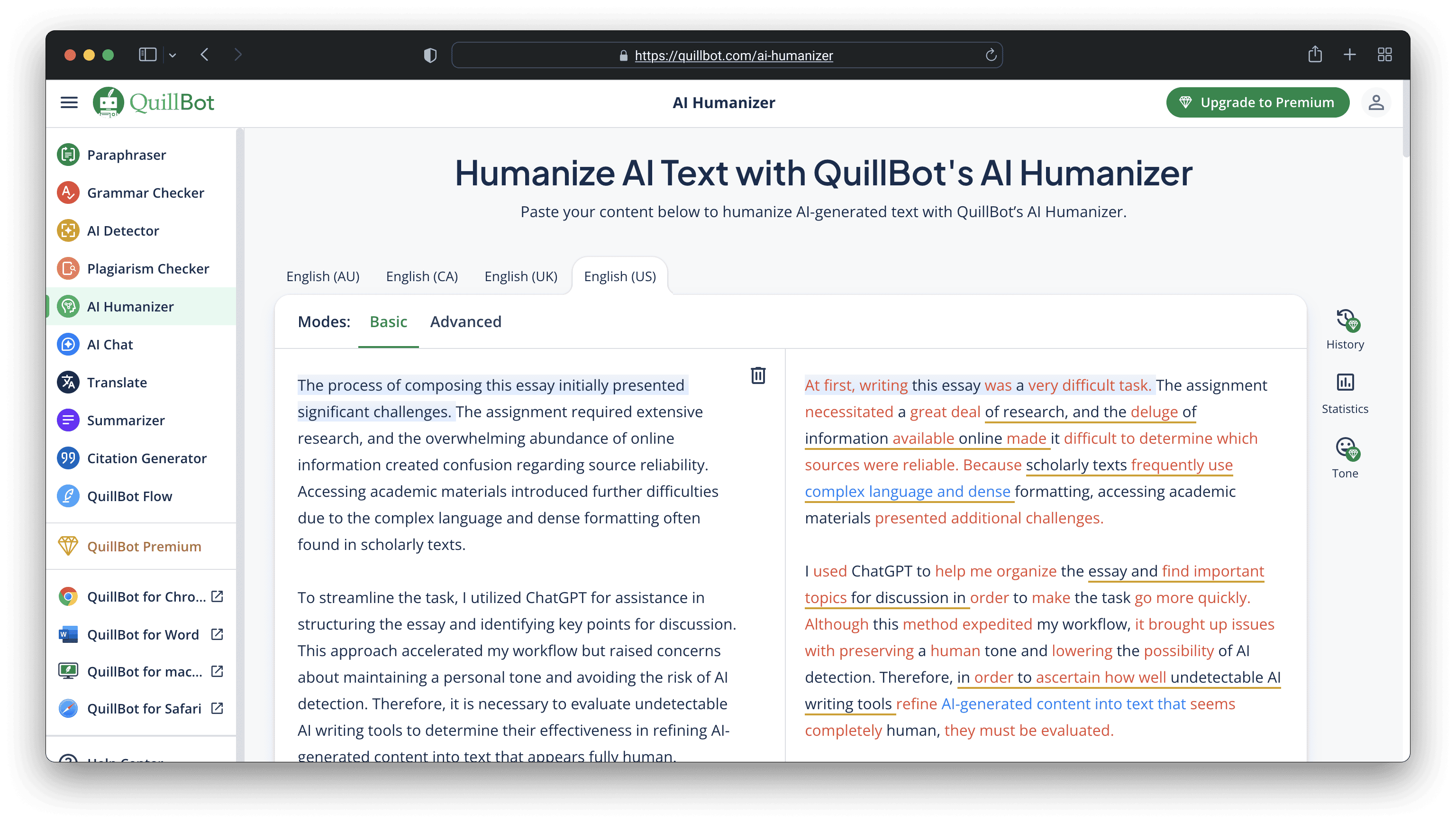
But here’s what I’ve noticed: QuillBot doesn’t always succeed in making text truly undetectable. Turnitin’s AI checker can still catch QuillBot outputs, especially if you rely too heavily on its standard modes like “Fluency” or “Standard.” I’ve seen better results when students use the “Creative” mode, but that sometimes introduces awkward phrases.
I worked with a student, Lily, who used QuillBot to rewrite a scholarship essay. She ran the text through Turnitin after paraphrasing and got flagged. When we ran the same text through JustDone’s humanizer instead, it passed undetected and sounded more natural. That’s why I give QuillBot a 7 out of 10: it’s convenient, but not the most reliable undetectable AI humanizer for high-stakes writing.
Humanize AI Tool – 6.5/10
Humanize AI Tool is another platform students in the U.S. are using to bypass AI detection. It works by rephrasing text, adjusting sentence lengths, and trying to mimic human writing flow. On the surface, it looks like a solid choice for generating undetectable AI content.
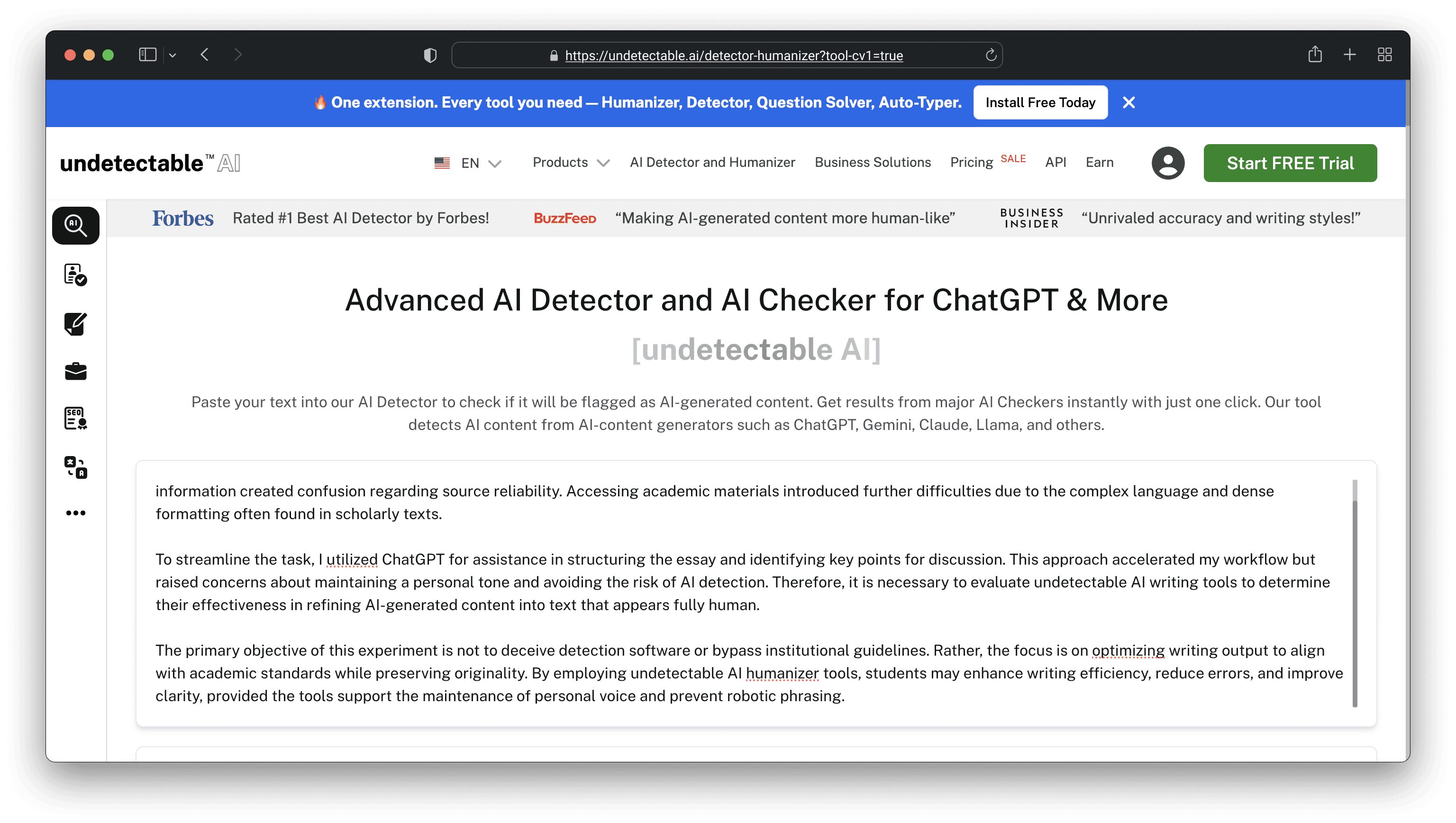
In practice, though, I’ve found it to be hit-or-miss. The tool does a decent job breaking AI patterns, but sometimes the changes are too subtle to fool advanced detectors like Turnitin’s AI checker or GPTZero. I’ve run experiments where Humanize AI Tool got the content past free online detectors but still got flagged by university-level tools.
One graduate student I helped used it to process a research introduction. The tool improved readability but didn’t lower the AI score enough to avoid a flag. We ended up switching to JustDone’s AI humanizer, editing manually afterward, and resubmitting with success.
Humanize AI Tool can work for simple assignments, but for complex or academic writing, it needs a human editor after the fact to really make the writing safe and authentic.
Smodin Humanizer – 6/10
Smodin offers an AI humanizer feature alongside its paraphrasing and summarization tools. It’s popular because it’s accessible and fast. Many students use it when they’re in a time crunch, hoping to create undetectable AI content before a deadline.
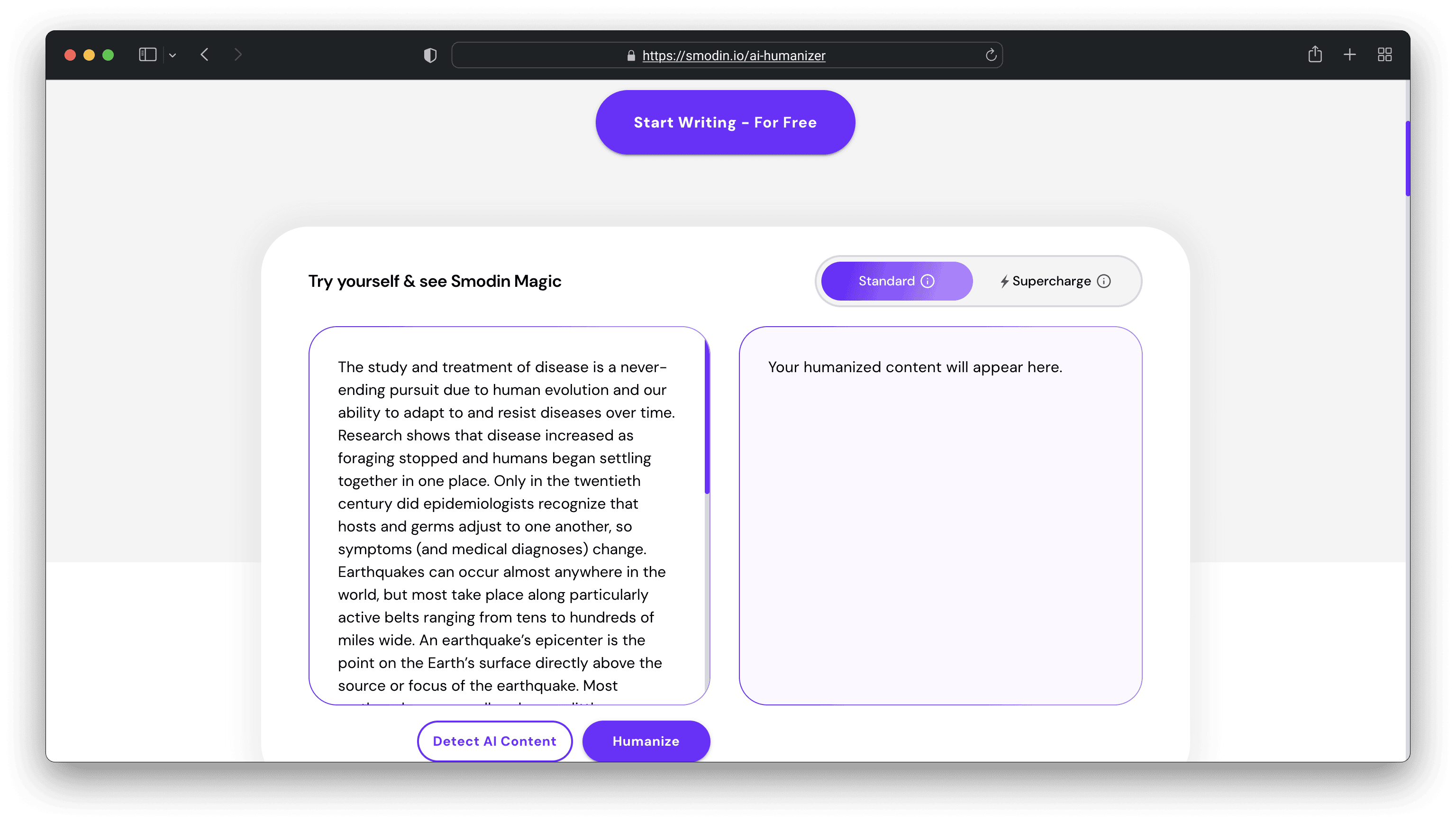 However, Smodin’s outputs often still sound AI-like. It rephrases sentences but sometimes sticks too closely to the structure of the original input. This makes it easier for AI detection tools to still pick up on patterns.
However, Smodin’s outputs often still sound AI-like. It rephrases sentences but sometimes sticks too closely to the structure of the original input. This makes it easier for AI detection tools to still pick up on patterns.
In one case, I worked with a business student who used Smodin to rewrite a marketing case study. After scanning the text with JustDone’s AI detector, it still scored above 80% likely AI. We had to run additional manual edits to reduce that score. Smodin is useful for quick paraphrasing, but not the most reliable option if your goal is truly undetectable AI writing.
Final Thoughts About Undetectable AI Humanizers
After all this testing, my advice to students is simple. Don’t choose an undetectable AI writer just to trick the system. Use a tool that helps you revise, personalize, and improve your writing. The goal is to bypass AI detection because you’ve written something authentic, not because you’ve buried your work under layers of robotic editing.
That’s why I usually recommend starting with JustDone AI Humanizer. It blends AI rewriting with tone preservation, encourages manual editing, and helps students learn along the way. The tool also integrates AI detection checks, so you can self-review before your teacher does. It’s not about cheating. It’s about collaborating with AI responsibly.
The best undetectable AI writing tool is the one that lets you sound like you, only better. That’s the real secret, and it’s the reason why my students keep coming back for this advice year after year.